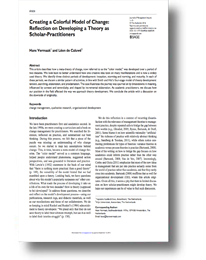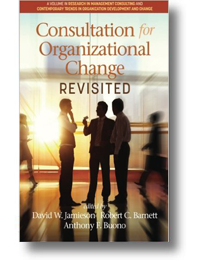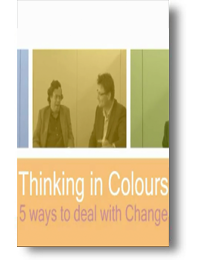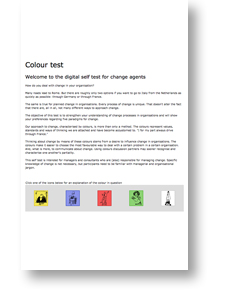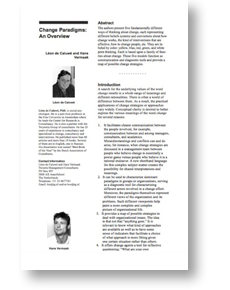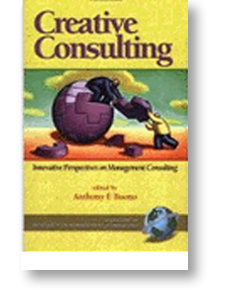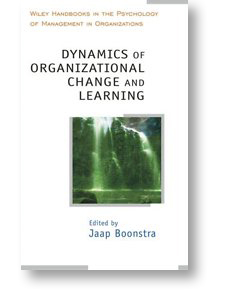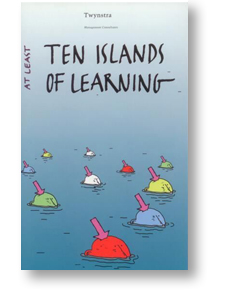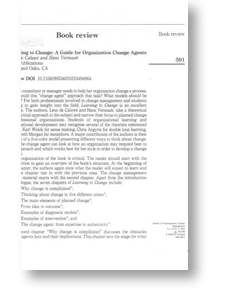This is the most up to date, complete and concise publication on the colors of change. It is written for both practitioners and academics that want to go beyond the basics. Those who already know about this change theory are likely to be surprised to find there is more to both the model and its applications Read more…
publications
The colors of change – revisited
In: R. Shani & D. Noumair. Research in Organizational Change and Development (vol. 26) - Emerald, 2018
Learning to change
A guide for Organizational Change Agents
‘Learning to Change’ provides a comprehensive overview of organizational change theories and practices developed by both U.S. and European change theorists. The authors compare and contrast different approaches: five fundamentally different ways of thinking about change Read more…
Creating a colorful model of change
Reflection on developing a theory as scholar-practitioners
This article describes how, almost twenty years ago, we came up with a meta-theory of change, now referred to as the “color model,” and how that theory has developed over time. We look back, using Smith and Hitt’s four-stage model of theory development, to better understand how one creative idea took on many manifestations, became a robust theory and is now widely used. Read more…
Knowing yourself as a change agent
In: D. W. Jamieson, Barnett & A Buono (eds.) Consultation for Organizational Change Revisited - Information Age Publishing, 2016
This chapter presents a questionnaire that measures individual change preferences based on a meta-theory of five paradigms of change. We describe its construction and improvement over a 13-year period, during which time more than 100,000 people have used the test as an instrument for self-reflection.
Read more…
Thinking in colors – on video
Five ways to deal with change
Léon de Caluwé and Hans Vermaak present briefly five fundamentally different ways of thinking about change. Each of these represents a different belief system and conviction about how change works, the kind of interventions that are effective, how to change people, etc. They are labeled by color: yellow, blue, red, green, and white print thinking. Their color-model is based on their observations of current practices and existing theories about change. Read more…
The color test for change agents
How do you think about change?
This is an interactive test that helps you identify your convictions about change. The test results can be used to assess what type of change agent you are: what you are good at and what could be developed further. Read more…
Change paradigms
An overview
The authors present five fundamentally different ways of thinking about change, each representing different beliefs systems and convictions about how change works, the kind of interventions that are effective, how to change people, etc. Read more…
OD without context management is a luxury item.
Paper for a symposium on the future of Organizational Development
OD has an established tradition. There is a community of practice, academic research, handbooks in all sorts, development of new practices, lots of publications, proven methods. All seems fine. At the same time there is recurrent talk and publications expressing worry about the future of OD. Read more…
Comparing psychotherapists’ and change agents’ approaches to change
In: A. Buono (ed.) Creative Consulting: Innovative Perspectives on Management Consulting - Information Age Publishing, 2004
In this chapter we explore the most prominent clusters of theories for changing organizations and changing people. Managers and management consultants make use of the first set of theories while psychotherapist use the latter. Our assumption was that there would be considerable overlap between these sets of theories. Read more…
Thinking about Change: Complexity and Multiplicity in Change Processes
In: J. Boonstra (ed): Dynamics in Organizational Change and Learning - Wiley, 2004
Given that more organizational change takes place unplanned than planned and more unsuccessful than successful, we think there is justification for reflection on why change does not work. This implies complexifying things rather than simplifying them: to search for hidden rules of the game, for informal processes, political mechanisms in organizations, etc. Read more…
Book Review ‘Learning to Change’
A guide for Organization Change Agents
[…] The authors identify and integrate a large and disparate literature, and, in the process, do a nice job both summarizing and advancing it. The text is supplemented by high quality tables and charts that provide easy-to-use visual summaries or aides for comparison. For American readers, the book introduces works from European scholars who may not be that well known. Read more…
At least ten islands of learning
In Search of Corporate Learning
People learn, all the time and everywhere. Yet it seems we all have our own images and ideas about what learning actually is. More importantly, we all seem to have our favourite approaches to learning, which we call upon whenever a learning situation arises. Read more…
Book Review ‘Learning to Change’
A guide for Organization Change Agents
For professionals involved in change management and students wanting to gain insight into the field, ‘Learning to Change’ is an excellent resource. The authors, Léon de Caluwé, and Hans Vermaak, take a theoretical and practical approach to the subject. Read more…






